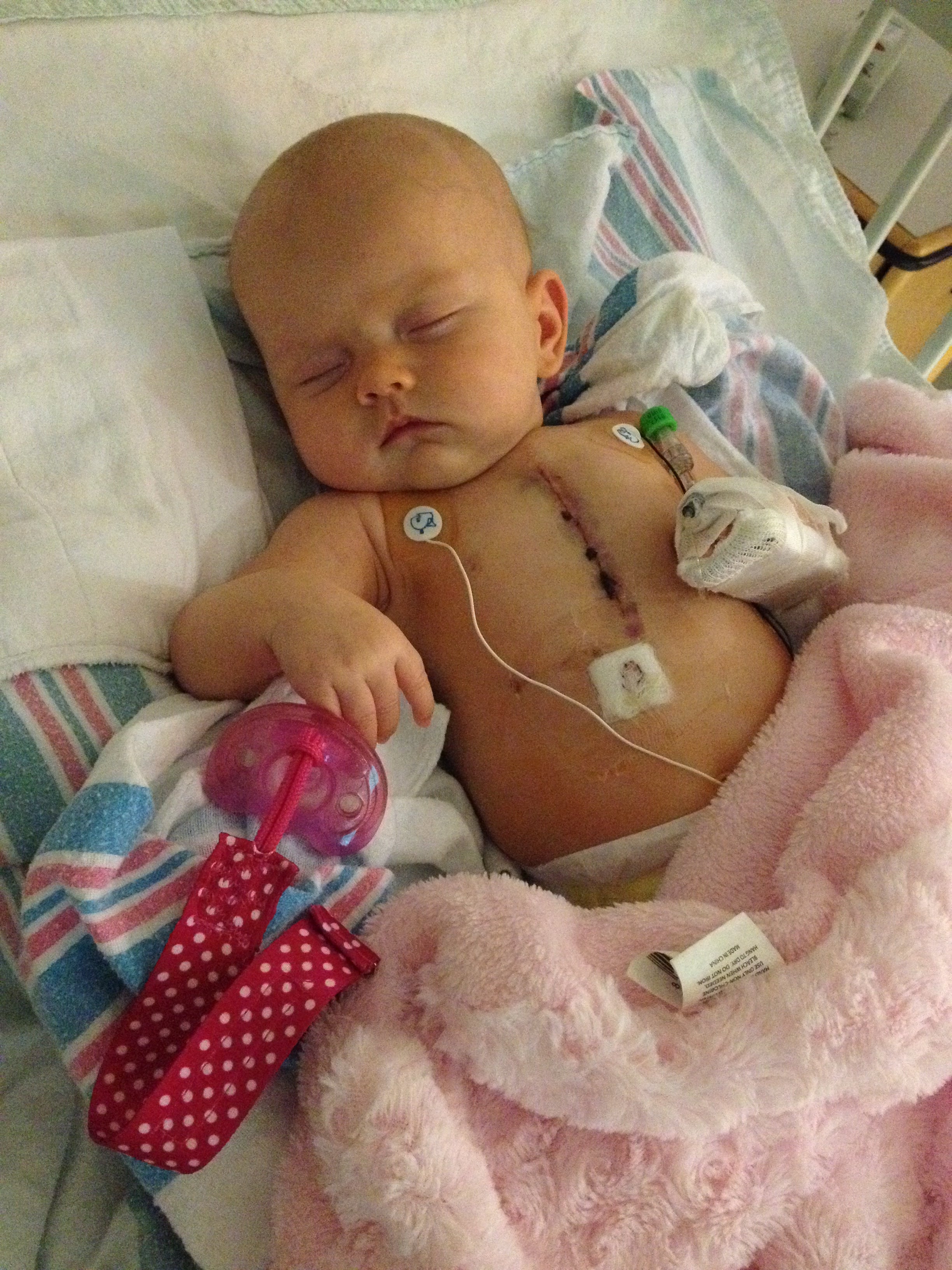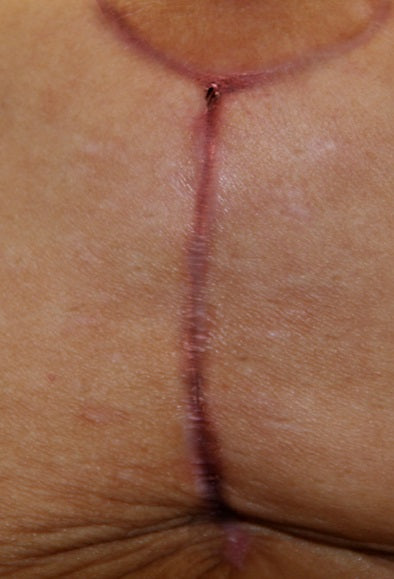Save 10% first order with code SCAR10 | FREE 2-DAY SHIP on Orders $30+
FREE 2-DAY SHIP on Orders $30+ | Leader in Advanced Scar Treatment
CASE STUDIES
Silicone gel sheeting and topical silicone gel have been used for many years as a successful treatment for a variety of scar types, both old and new. Scar types include keloids, burns, hypertrophic scars, and scars from trauma, cosmetic procedures, such as C-sections, and abdominoplasty. Browse case studies below of patients using NewGel+ sheeting or NewGel+E as a scar management solution. Downloadable versions are available with before and after photographs (warning: some photographs are graphic and may not be suitable for children). Please note individual results may vary.

CASE STUDY: PEDIATRIC OPEN HEART SURGERY
ABSTRACT: Ease of use, patient compliance and tolerability make silicone gel a viable alternative to silicone sheets, with multiple published scar treatment guidelines recommending its use. This case demonstrates an excellent aesthetic outcome of a pediatric open heart surgery scar.PROTOCOL: Treatment was initiated 5 weeks after surgery, and gel was applied twice daily for 12+ weeks. This case demonstrates the effectiveness and tolerability of NewGel+E when used on an infant. PROCEDURE: Five weeks after open-heart surgery the patient’s mother began twice daily treatment of the chest scar with NewGel+E. Treatment continued for 12+ weeks, with photos documenting progress taken frequently during treatment period.

CASE STUDY: ARM SCAR FOLLOWING ORTHOPEDIC SURGERY
INJURY: Ten year old healthy boy who suffered from a complex fracture of his left ulna on the 31st of August, 2016. He underwent open reduction and internal fixation on the same date.PROTOCOL: One month after the surgery, he started using a commercial ointment for the scars as prescribed by his primary physician. His parents weren’t satisfied with the results and they were referred to us for scar management in late November 2016. They started using NewGel+E silicone gel twice daily starting December 2016 until July 2017 as instructed.PROCEDURE: NewGel+E silicone gel was applied twice daily starting December 2016 until July 2017 as instructed. The patient showed a significant improvement with satisfactory results. NewGel+E silicone gel for treating hypertrophic scars is impressive, mainly following surgical interventions.

CASE STUDY - ACHILLES TENDON REPAIR
ABSTRACT: Female patient was participating in a TRX exercise class when she ruptured her Achilles tendon. Her orthopedic surgeon performed surgery to repair the ruptured tendon. Post-surgery, patient was left with a 6 inch scar which formed a keloid as it was healing. At six months post-surgery, the patient expressed unhappiness with the appearance of her scar. Her surgeon recommended the use of NewGel+ silicone gel sheeting to treat the scar.

CASE STUDY - FACIAL TRAUMA
ABSTRACT: 24-year old college student that sustained this laceration during an assault with a knife. The wound was "through-and-through" the upper lip and cheek. It was sutured and repaired primarily in the emergency department.This case demonstrates the effective results after treatment of an acute facial laceration with NewGel+.

CASE STUDY: HAND BURN
ABSTRACT: This study was done as a pilot study to qualitatively determine if the application of silicone gel sheeting using the NewGel+ product can affect scar appearance after deep first and deep second-degree burns. Study was of the left hand and forearm of 20-year old female patient with a campfire injury. Early results demonstrate improvement in healing of the second burn with no evidence of any contracture or hypertrophic scarring, good color matching of the skin and improved patient satisfaction.PROTOCOL: NewGel+ silicone gel sheeting was applied to the burn site. The patient was instructed to wear the silicone gel sheeting daily for a minimum of 8 hours per day. After 10-days of treatment, there was significant acceleration of healing. Two months post NewGel+ application showed complete healing of the second degree burn with no evidence of any contracture or hypertrophic scarring over the dorsal surface of the hand and the first webspace with good color matching of the skin. This patient had no risk factors for abnormal healing and was otherwise healthy. The results seen at ten days post treatment are somewhat surprising since one would not expect a dramatic change this early in the healing phase. DISCUSSION: Normal burns scars take an average of six to nine months to mature and blend with the adjacent skin. Also, deep second degree burns usually heal with scar contracture and hypertrophy, especially when it involves the dorsal surface of the hand, forearm and the first webspace.

CASE STUDY: VERTICAL BREAST REDUCTION
ABSTRACT: This study was done to determine if silicone gel sheeting would affect the healing of a scar after a vertical reduction mammoplasty. The patient has functioned as her own control, with the treatment of one side and the opposite side functioning as an untreated control. Early results demonstrate improvement in scar appearance, texture,and contour with improved patient satisfaction.PROTOCOL: This study was done as a pilot study to qualitatively determine if the application of siliconegel sheeting using the Newmedical Technology product can affect scar appearance after vertical reduction mammoplasty. The 20-year-old patient was randomly selected as an average mammoplasty patient withno significant medical problems, as a non-smoker, and no contraindications to the use of silicone gel withno previous sensitivity documented. Scars are simply evaluated qualitatively for visual difference, colour change, surrounding skin changes, and clinically evaluated for texture. Informed consent was obtainedfrom the patient prior to participating in the study.PROCEDURE: NewGel+ silicone gel sheeting was provided to the patient for treatmentof the left side only. No treatment was given for the right side. Treatment side was randomly chosen post-operatively. The silicone sheeting was worn for most of the day and replaced after 7 to 10 days. Silicone gel sheeting has had a beneficial effect on the cosmetic appearance of a post-operative scar in a patient undergoing a vertical reduction mammoplasty. Although the mechanism ofaction has yet to be determined, this pilot study clearly has demonstrated an improvement in scarappearance and patient satisfaction.

CASE STUDY: FACIAL SKIN CANCER DEFECT
ABSTRACT: Silicone based products are commonly used to prevent and treat post-surgical skin scars. This case demonstrates the early results of a silicone gel in a patient who underwent excision and reconstruction of a skin cancer on her cheek. After 7 weeks, the scar is minimal and can easily be concealed with a small amount of makeup. These types of results are particularly important on the face since patients are fearful and anxious about significant scaring and disfigurement.PROTOCOL: Application of NewGel+E silicone gel started 7 days after procedure, twice a day for 7 weeks. DISCUSSION: Excision of benign and malignant skin lesions are a common problem that causes patient apprehension due to potential for significant scars on a prominent and socially important body region. Although most scars fade after a few months, a protocol to minimize scars is useful, particularly in patient who are more sensitive about their appearance. All patients should be informed that any skin lesion excision will result in a visible scar and the possibility of future scar revisions. They should also be educated on the importance of techniques to minimize scar visibility such as scar massage, sun protection and the use of silicone based products on a routine basis. This case shows the significant improvement in facial scarring after skin lesion excision when NewGel+ silicone gel (sometimes referred to as silicone ointment) is incorporated as part of a scar management protocol.

CASE STUDY: SILICONE GEL SHEETING FOR TREATMENT OF COMPLEX KELOID
ABSTRACT: This case report presents a patient who sustained a complex keloid scar in the right side of the face and had significant improvement by preventing the keloid from forming again after using the NewGel+ silicone gel sheeting. The patient is a 56 year old woman who had a complex old keloid that formed several years ago from a previous injury. 2 months after keloid was surgically removed, the patient complained of keloid formation again, as well as discomfort and a sensation of tightness around the surgical area.PROTOCOL: The patient used NewGel+ silicone gel sheeting over the surgical scar area that started to form another keloid scar. After 6 weeks of treating the reforming keloid with 1 x 6 strips of NewGel+ silicone gel sheeting, the patient had significant improvement in flattening and preventing the keloid from forming as well as significant fading of the surgical scar. This care report describes significant improvement in the hypertrophic scarring of her complex keloid of the right side of the face.

CASE STUDY: Pediatric Burn Injury Caused by Boiling Water
Abstract: Parents of pediatric patients worry about the appearance of scars and potential lifelong disfigurement and often actively seek treatment to minimize the appearance of scars. Silicone gels have long been used to help prevent abnormal scar formation after burns, and to promote an aesthetic scar outcome. This case illustrates the excellent aesthetic outcome of pediatric facial burn scars treated with NewGel+E, while untreated burn scars on the patient’s arm and chest resulted in keloid formation.
